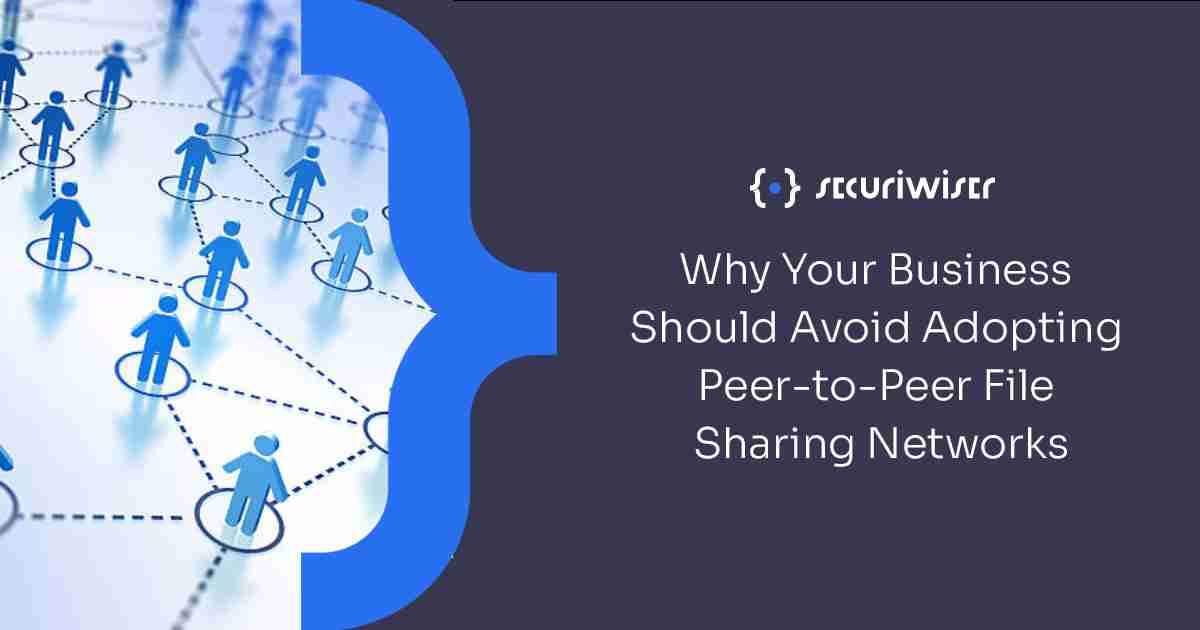Why Your Business Should Avoid Adopting Peer-to-Peer File Sharing Networks
Blog / Why Your Business Should Avoid Adopting Peer-to-Peer File Sharing Networks
3 MIN READ

What is peer-to-peer file sharing
Peer-to-peer file sharing (also known as P2P) refers to the distribution and sharing of files and media using P2P networking technology. This networking system enables computers to communicate with other connected computers in the P2P network whilst simultaneously storing separate files and running its own applications.
The devices that are connected to a P2P network are known as ‘peers’, each of which run at equal level. Within the network, there is no central administrator and the peers’ function simultaneously as both servers and clients.
Every file that is distributed among the P2P network is accessible among each device connected to the network.
Several reasons for why peer-to-peer file sharing have been increasingly adopted include the following:
- Increasing internet bandwidth
- Increasing digitalisation of media
- Increasing capabilities of residential and personal computers
- Enabling of transferral of multiple files from one device to another using the Internet through the use of file transfer systems or other file sharing networks.
How does it work?
Downloading files from peer-to-peer networks are carried out differently from the usual method. Users are required to have installed a peer-to-peer software which will establish a virtual network of peer-to-peer application users. From the installed network, when the user downloads a file, the user will receive it in parts that come from the associated computers that already have the file in the network.
Data is also sent from your computer to the computers that request for it. The file in question is comparable to multiple parts of data that are sent to your computer but also get sent from your computer to the requesting entity. In this manner, files are transferred among peer computers.
When a user downloads a file, their device becomes referred to as peer. When downloading is complete, the computer becomes known as a ‘seed.’ Additional computers connected to the network can download files from both seeds and peers. The more computers there are connected to a network, the faster the download.
Why are peer-to-peer networks used?
Establishing servers for various purposes can be very expensive, difficult to manage and time consuming. In response to these difficulties, some users opt for establishing a peer-to-peer network as a cheaper alternative.
Peer-to-peer networks offer users:
- Lower bandwidth and infrastructure costs – If established, servers will not be required and users will be able to share their bandwidth within the P2P network, reducing further costs.
- No centralised network – One issue can affect a whole centralised network however with P2P networks, every peer is replaceable. Of one peer loses connection to the network, the other peers can still resume operation.
- Privacy – Files that are distributed among the network are encrypted and sender information can be hidden.
- Reduced maintenance need – Due to no server installation.
- Increased download speed for larger files – As a result of the method of which P2P network’s function, larger files can be downloaded quicker compared to downloading from a central network/server.
Businesses should avoid having this method implemented
For business owners, the reduced infrastructure and maintenance cost may arise interest however, it is best for business owners to avoid installing this type of network for file distribution and other various needs.
Reasons that businesses should avoid utilising a P2P network include:
- Lack of ownership over files.
- Shared files cannot be updated and instead, a new file will need to be shared to notify peers of updates.
- Lack of control over who can access the file you shared.
- Can take longer to find the intended file.
- The network is not easy for use for unfamiliar users. It is not too complex however; it will require interested users to experiment before adopting its usage.
- A P2P application needs to be installed among those who wish to be part of the network first and in many established businesses, this type of software is banned due to the network being a tool that can enable illegal file sharing.
- Using this type of network to share files will slow the Internet connection in your office.
What Securiwiser can offer
We aim to provide our clients advice concerning implementation of various specific cyber security methods, some of which will be more suitable than others depending on the business type to help ensure the cyber health of our client’s system.
We advise our clients (whether they are individual users or business owners) regarding various cyber threats that their businesses and operating systems may face. This includes increasing trends of certain threats and prevention methods that are cost effective and time saving.
Furthermore, business owners, employees and the general users may forget to conduct regular scans to monitor the health of their operating system, which criminals can take advantage of to gain unauthorised access by exploiting unrecognised, underlying vulnerabilities.
Securiwiser can conduct regular scans for your system and provide a detailed cybersecurity risk assessment and a cybersecurity vulnerability assessment. We can further explain detected vulnerabilities and risks in detail to our clients and provide the best course of action that will save your business time and money.
Next Article
Cloud Security: Risks and CountermeasuresHow secure is
your school?
Blog categories
How secure is
your school?